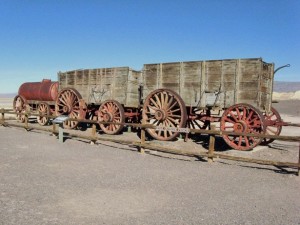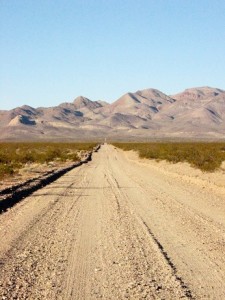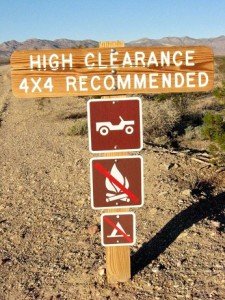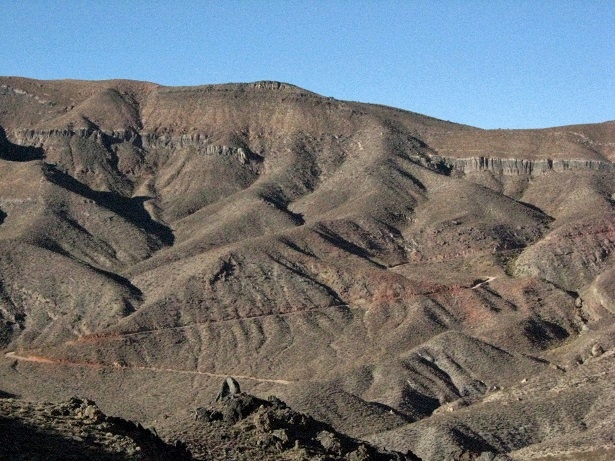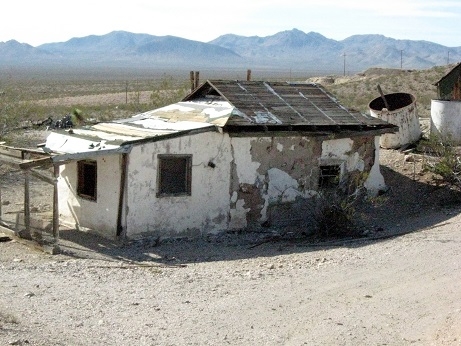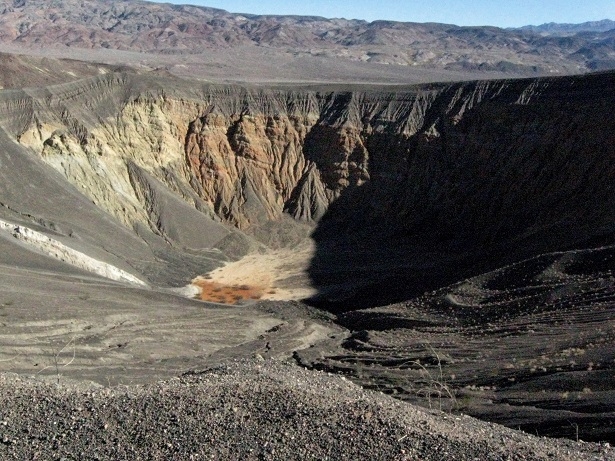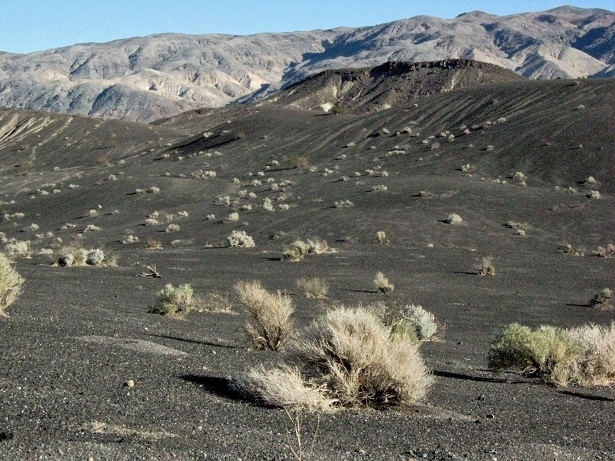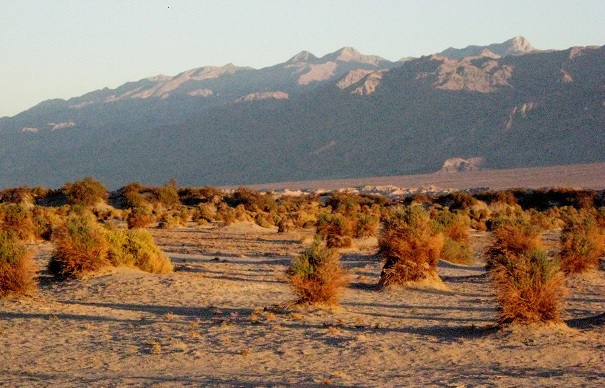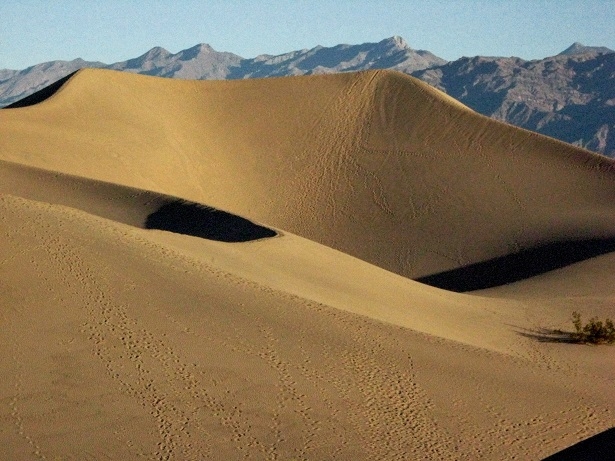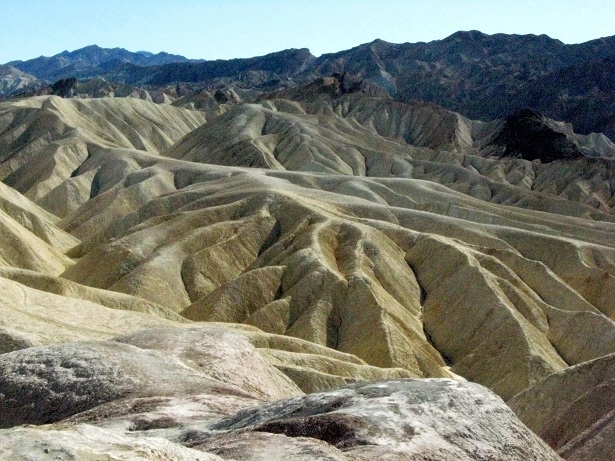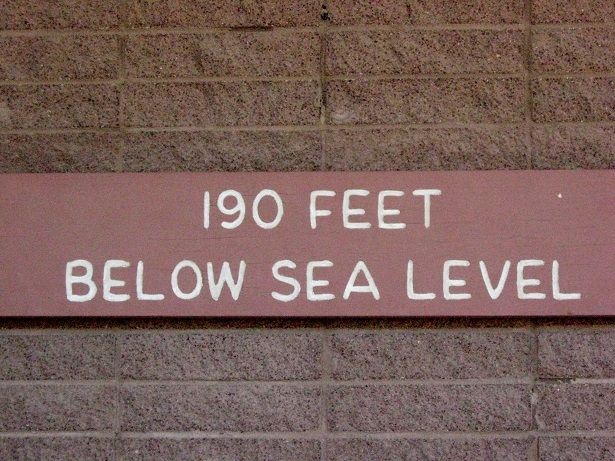
A hot, dry, and desolate but fascinating National Park. Updated July 2022.
Death Valley
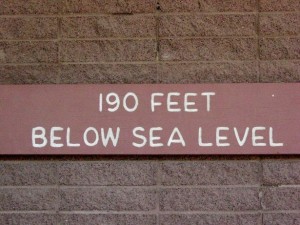 Death Valley is one of the most desolate places I have been to. Others include central Greenland and the Dead Sea. Death Valley is the lowest place in the western hemisphere at 282 feet (86 metres) below sea level. The Dead Sea in Israel is 1,370 feet (417.5 metres) below sea level. The Sonoran Desert, which I toured several times, is a lush garden compared to Death Valley.
Death Valley is one of the most desolate places I have been to. Others include central Greenland and the Dead Sea. Death Valley is the lowest place in the western hemisphere at 282 feet (86 metres) below sea level. The Dead Sea in Israel is 1,370 feet (417.5 metres) below sea level. The Sonoran Desert, which I toured several times, is a lush garden compared to Death Valley.
Death Valley is a land of extremes. It is the hottest place in the western hemisphere, yet it might be snowing just a short distance away. When I left the campground at 7 a.m., it was 50 F (10 C). By 0930, it was 79 degrees (26 C). The high for the day was 90 (about 33C). If this is winter, I would not want to be here in the summer. Temperatures can reach 130F (55C).
Death Valley is the driest place north of the equator. It seldom rains here but when it does, look out. There can be floods and roads are washed away, and people are stranded in their cars until the water subsides. Also, being in a canyon when it rains can be very dangerous.
It is a very desolate-looking place, yet there can be a profusion of wildflowers in the spring. The flowers do not come every year. It depends on how much rain falls during the winter. The average annual rainfall is less than two inches (5 cm). It rains only a few times per year.
Camp at Beatty Nevada
There is a rugged and arid mountain range on each side of Death Valley. I camped at the town of Beatty, across the border in Nevada. Beatty is at 3,300 feet (1006 metres). After a 20-minute drive through the mountains, you descend into the valley. There are campgrounds in Death Valley, but the climate in Beatty is much more comfortable.
Borax
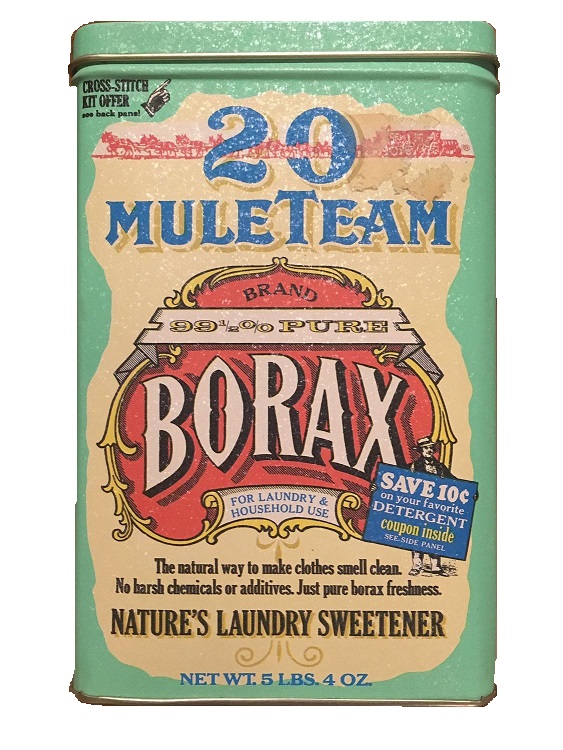
Death Valley is famous for the discovery of Borax in 1883. Borax looks like white rock. It consists of a mineral called boron and salt-containing boric acid. Borax dissolves easily in water. It has a wide variety of uses. It can be used as a component in laundry detergents, cosmetics, enamel glaze, fire retardant, and was sometimes used, instead of mercury, to separate gold from rock.
The Borax was collected on the surface of the valley floor and brought to a central location to be processed. The material was boiled to remove dirt and gravel. These things, heavier than Borax, would sink to the bottom of the vat. The Borax was then skimmed off and set aside to crystalize. Borax will not harden at temperatures higher than 120 F, so they could work only during the winter.
The hardened Borax was then loaded into carts and pulled by teams of 20 mules across the valley and up 2,000 feet into the mountains to the nearest railway at a town called Mojave, a distance of 160 miles (257.5 km). Two carts of Borax and a wagon of water weighed 36.5 tons. The trip took ten days each way. The teamsters were paid $120 a month at a time when a good wage was $50.
Some of the original Borax wagons and water trailers are displayed in the park. Just add 20 mules are you are set to go.
20 Mule Team Borax Cleaner
The Borax was refined into a powder and marketed as an all-purpose cleaner with the name of 20 Mule Team Borax, registered in 1894. It is still being produced today, but the company was sold to the Dial Corporation in 1988.
Their website says that 20 Mule Team Borax has the following uses: water softener, cleaner, disinfectant, laundry detergent, stain remover, and an ingredient in bleach and starch. It can be used to deodorize your refrigerator or garbage pail or toilet bowl, clean stains on carpets or upholstery, clean urine from mattresses, clean bathroom tile and tubs, or dry flowers (cover the flowers with Borax in a shoe box for 7 to 10 days). Soak twine in Borax to make candle wicks (it reduces ash and eliminates smoke). It is also used as an ingredient in cosmetics, medicine, ceramics and building material, fibreglass, fire retardants, antifreeze, brake fluid, aircraft bodies, particle board, treated wood, protection from termites, rot and fungi, and much more.
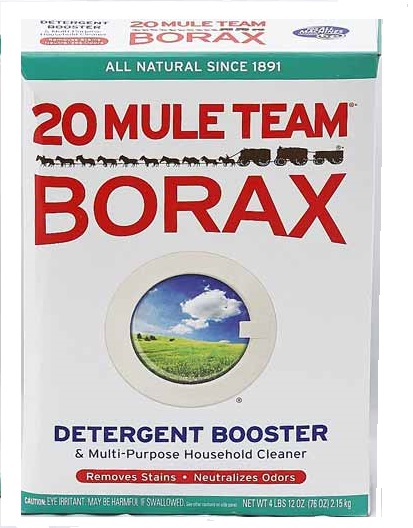
Borax is still in use today and can be purchased at most supermarkets.
Death Valley Days
The Borax company hosted a TV show called Death Valley Days from 1952 to 1970 (it was on radio before that from 1930 to 1951). The show featured a guy called the Old Ranger who told true but strange stories of events in Death Valley. One of the actors was Ronald Reagan (in eight episodes). He also hosted the show as the Old Ranger from 1964-1965 (it was his last job as an actor before switching to politics). Stories were based on actual events.
Several episodes of Death Valley Days are now available on Youtube.
Touring Death Valley
Death Valley National Park is about three million acres, so you will not be able to see it all unless you spend a lot of time here. The park is desolate yet beautiful in its way. The soil is multi-coloured, including black, brown, white, red, pink, green, turquoise and even blue. You can see the main sights in Death Valley in two or three days. Here are the places in Death Valley that I went to see.
Titus Canyon
On either side of Death Valley, the mountains soar to over 6,000 feet (1,829 metres). One of them is more than 11,000 feet. From my campground in Beatty, Nevada, I first drove through a narrow, rugged and remote mountain pass called Titus Canyon. This is not the usual way to enter Death Valley. There are excellent, wide, paved roads, but I often do things the hard way. I prefer remote locations as one is more likely to see wildlife or unusual sights there, or sometimes just for adventure.
Do not take the Titus Canyon route unless prepared for the conditions. Take plenty of drinking water. Be prepared to be stranded for a long time if your vehicle breaks down before someone comes along to help. (I did not see another vehicle all morning). The roads are hazardous, narrow and often have steep drop-offs with no guard rails. If you met a vehicle coming in the opposite direction in Titus Canyon, there would be a problem as someone would have to reverse through the narrow, windy canyon. Fortunately, the road is one-way, so this should not happen. The entrance is in Nevada near Beatty. The road through the canyon is smooth, but first, you must ascend the mountains and go through Red Pass.
Photos – Above left: The road to Death Valley through Titus Canyon. It looks like an easy ride, but when you reach the mountains, you must go through Red Pass and Titus Canyon before descending into Death Valley on the other side. Above Right: Warning Sign. Below: the road through Red Pass
.

Ghost Towns in Death Valley
During the 1800s and early 1900s, there were towns where a few hardy people lived in Death Valley. The road to Titus Canyon passes through Leadfield, one of several ghost towns in Death Valley. Not too much remains of these towns except the hulks of decaying buildings. If you don’t want to risk travelling on the Titus Valley road, ask at the visitor’s centre for a map with the location of other ghost towns. Remember that the Titus Valley Road is one-way; if you go to Leadfield, you will be committed to continuing through Titus Canyon. Other ghost towns in Death Valley National Park include Harrisburg, Panamint, Skidoo and others outside the park border. Keep in mind that some of the roads in the park are very rugged and require high-clearance vehicles and experienced four-wheel drivers.
The Devil’s Golf Course
I went to one area called the Devil’s Golf Course. No one would ever be able to golf there. The area consists of salt formations that have dried and heaved up. The rocks are jagged and sharp. A fall might result in severe cuts and abrasions.
The Ubehebe Crater
On the second day, I went to see Ubehebe Crater. Here some underground lava met up with some underground water. The resulting steam in a confined space caused a massive explosion, creating a half-mile-long crater 500 feet deep (152.4 metres). This happened 2,000 years ago. It looks like a volcano, but there is no mountain. The hole is below ground level, whereas a volcano crater is at the top of a mountain. The area around the crater is covered in lava ash for a distance of three miles on either side. Not much grows there. You are liable to get quite dirty if you go for a walk here.
The Devil’s Cornfield
Next, I went to see a place called the Devil’s Cornfield. It is a sandy area, and the plants there look like piles of corn after harvest.
Sand Dunes
Not far from the Devil’s Cornfield is a large sand dune. Sand is rare in Death Valley. Most of the terrain is more like gravel. The wind picks up tiny grains of sand and deposits them in places where it loses its velocity, creating sand dunes. The sand here is lovely and soft, with no large grains. It is a beautiful beach; too bad there is no water. I saw some tracks of lizards in the sand.
Wildlife
My main wildlife sightings consisted of a few grasshoppers. In addition, I saw some ravens and blackbirds and one tiny lizard that ran away before I had a chance to look at it. There are many animals here, but they are seldom seen. Most of them are nocturnal. They include the pack rat, the kangaroo rat, the chuckwalla (a large lizard), mountain lion, big horn sheep, tarantulas and the Sidewinder (snake).
Zabriskie Point
Zabriskie Point is a place in Death Valley National Park with very rugged badlands and strange rock formations caused by erosion over many years.
Museum
There is an excellent Death Valley Museum that I recommend visiting. I saw a plastic model of the 20 mule team in the museum like the one I had when I was a child.
Summary
There are people here from all over the world. I met people from Holland and Germany and I saw vehicles from as far away as Florida, Alaska and even Hawaii. There are only a few Canadians here but there are lots in nearby Las Vegas. I saw one car from Alberta and one from British Columbia.
It was nice to get back to the campground in Beatty in the evenings. Hiking in Death Valley is hard work, and by the end of the day, I was exhausted and happy to get home to my trailer. I had to wear off all the extra calories I ate in Las Vegas. I have to keep my trim figure. By 8 p.m. I was feeling a little cold. The temperature drops more than 20 degrees when the sun goes down.
If You Go
Take plenty of water. By afternoon the warm water does not taste so good but will prevent dehydration and could save your life if you get stranded someplace.
Death Valley is not for everyone. However, I found it fascinating, and I highly recommend it for adventurous people with a suitable vehicle. I know that most people prefer the luxury of Las Vegas, but I like to see things that you cannot see anywhere else in the world. Highway 95 from Las Vegas goes to Death Valley through Beatty.
When you get to Death Valley National Park, check-in at the Visitor’s Centre at Furnace Creek for maps and the latest information about road conditions.
Warning Signs
Don’t count on using your air conditioning in Death Valley. It might be too hard on your vehicle and cause overheating.
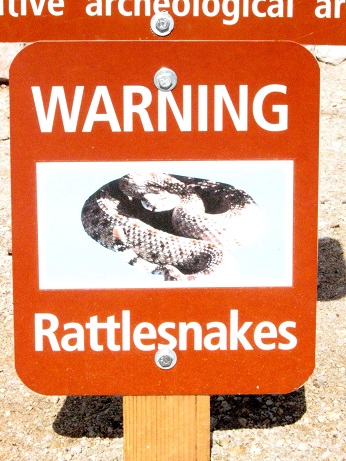
Watch out for rattlesnakes. (I didn’t see any).
